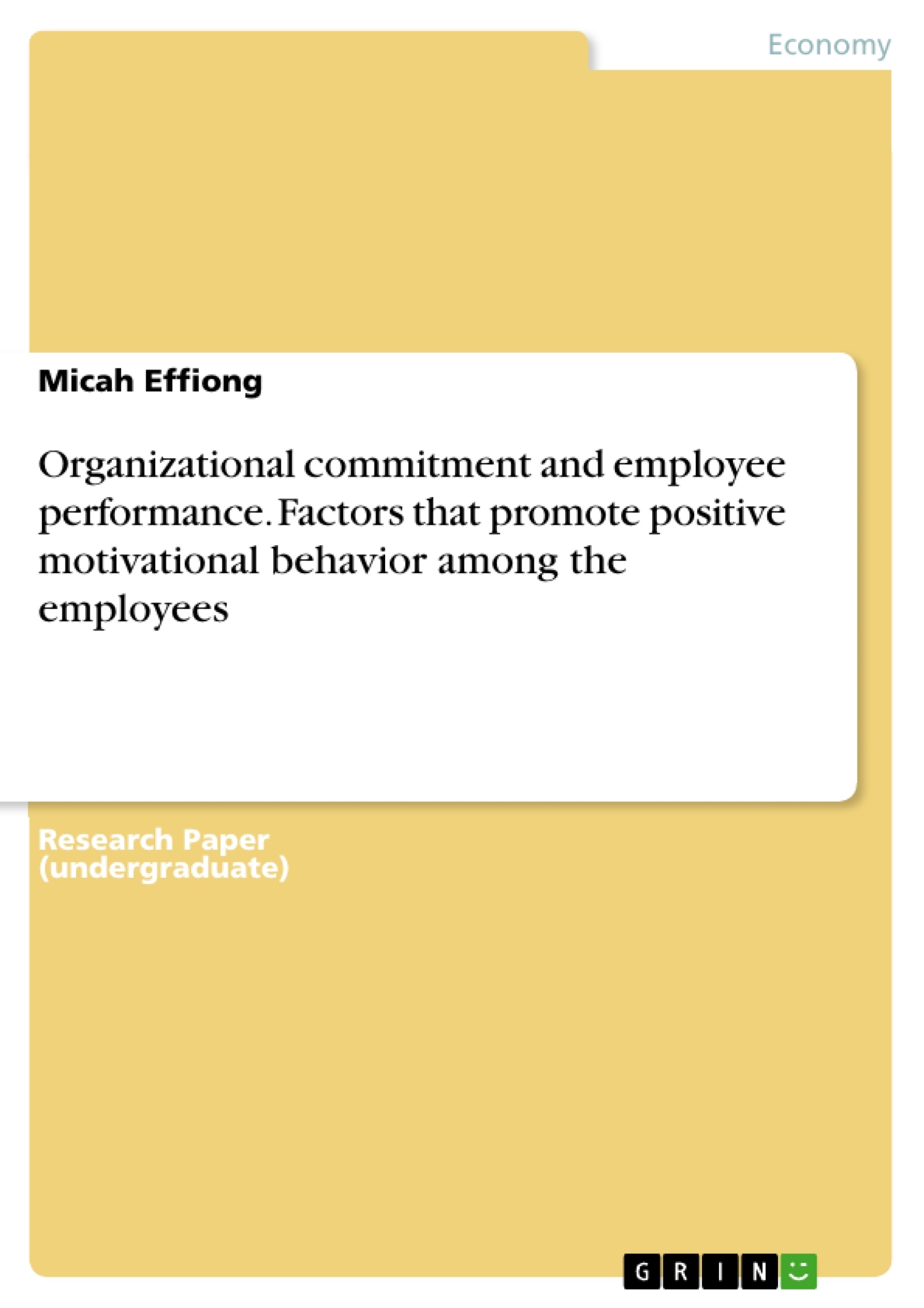The purpose of this study is to examine the relationship between organizational commitment, moral or affective commitment, calculative or continuance commitment and normative commitment and job performance. The population of the study is made up of 300 academic and non-academic staff of Ritman University, Ikot Ekpene, Akwa Ibom State. The paper used purposive sampling for the selection of the respondents. Questionnaires were distributed to the respondents for statistical analysis. The study utilized linear correlation coefficient to analyze the data collected.
The study revealed a number of findings including: there is a significant correlation between organizational commitment and employee performance, there is a significant correlation between moral or affective commitment and job performance, there is statistically significant correlation between continuance commitment and job performance. Based on the findings, some recommendations were made most importantly: Nigeria University should lay more emphases on the provision of social responsibility to its workers, owners, society and other stakeholders. Finally, the success or failure of any organization depends on its workforce. Adequate motivation and remuneration boost the employee moral to work harder towards achieving or accomplishing challenging task or goals.
TABLE OF CONTENT
CHAPTER ONE: INTRODUCTION
1.1 Background to the Study
1.2 Statement of the Problem
1.3 Research Question
1.4 Objective of the Study
1.5 Hypotheses of the Study
1.6 Significant of the Study
1.7 Scope of the Study
1.8 Limitation of the Study
1.9 Definitions of Term
CHAPTER TWO: REVIEW OF RELATED LITERATURE
2.0 Introduction
2.1 Conceptual framework
2.1.1 Emotional/affective commitment
2.1.2 Continuance commitment
2.1.3 Normative commitment
2.1.4 Strategies Used For Motivation as Organizational Commitment
2.1.5 Salary, Wages and Conditions of Service
2.1.6 Staff Training
2.1.7 Communication
2.2 Review of Relevant Study
2.2.1 Organizational Commitment
2.2.2Levels of Commitment - Forms of Commitment
2.2.3 Antecedent to commitment in work place
2.2.4 Consequences of workplace commitment
2.3 Theoretical Framework
2.3.1. The Early Era
2.3.2 Middle Era
2.3.3 The Third Era the Multi-dimensional Approach
2.3.4 Model Based on two Dimensions
2.3.5 Era of multiple competitions
CHAPTER THREE: RESEARCH METHODOLOGY
3.0 Introduction
3.1 Research design
3.2 Population of study
3.3 Sample and sample technique
3.4 Source of data
3.5 Scoring Instrument
3.6 Method of Collecting Data
3.7 Method of Data Analysis
3.8 Decision Criteria
CHAPTER FOUR: DATA PRESENTATION, ANALYSIS AND INTERPRETATION
4.0 Introduction
4.1 Data presentation
4.1.1 Number of questionnaire administered and returns to the researcher
4.1.2 Presentation of data by sex
4.2 Data Analysis/Interpretation
4.3 Test of hypotheses
CHAPTER FIVE: SUMMARY, CONCLUSION AND RECOMMENDATION
5.0 Introduction
5.1 Summary
5.2 Conclusion
5.3 Recommendation
Bibliography
Appendix
Questionnaire
- Quote paper
- Micah Effiong (Author), 2017, Organizational commitment and employee performance. Factors that promote positive motivational behavior among the employees, Munich, GRIN Verlag, https://www.grin.com/document/518385
-

-

-

-
Upload your own papers! Earn money and win an iPhone X. -

-
Upload your own papers! Earn money and win an iPhone X. -

-
Upload your own papers! Earn money and win an iPhone X. -

-
Upload your own papers! Earn money and win an iPhone X. -

-
Upload your own papers! Earn money and win an iPhone X. -

-
Upload your own papers! Earn money and win an iPhone X. -

-
Upload your own papers! Earn money and win an iPhone X. -

-
Upload your own papers! Earn money and win an iPhone X. -

-
Upload your own papers! Earn money and win an iPhone X. -

-
Upload your own papers! Earn money and win an iPhone X. -

-
Upload your own papers! Earn money and win an iPhone X. -

-
Upload your own papers! Earn money and win an iPhone X.

